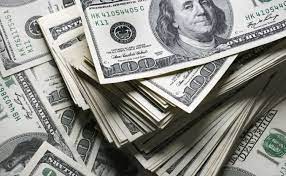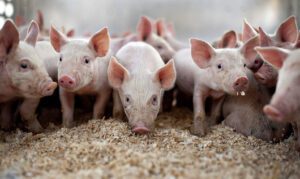
Kernel, one of the largest Ukrainian agro-industrial groups, in the 2022 financial year (FY, July 2021-June 2022) reduced sales of vegetable oil (sunflower and rapeseeds) by 29% compared to FY 2021 – to 967,000 tonnes from 1.37 million tonnes, the total processing of oilseeds – by 31%, to 2.19 million tonnes from 3.18 million tonnes.
According to a report published on the company’s website, the decline in production and sales of oilseeds and vegetable oil was caused by the blockade of Ukrainian seaports by warships of the aggressor country of the Russian Federation, as a result of which the active harvesting, processing and export of grain and sunflower oil was stopped.
It is specified that in the fourth quarter of FY2022 (March 2022-June 2022), Kernel sold 60,800 tonnes of sunflower and rapeseeds oil (less by 78% compared from the fourth quarter of FY2021) and processed 156,600 tonnes of oilseeds crops.
The total export of agricultural crops by Kernel in the fourth quarter of FY2022 decreased by 93% compared to the same period of the last fiscal year, to 123,000 tonnes, while in FY2022 the reduction was 1% – to 7.97 million tonnes.
In total, in the fourth quarter of FY2022, the group of companies increased the volume of agricultural products delivered to its elevators by 12% compared to the fourth quarter of FY2021, to 65,500 tonnes, while for the entire FY2022, some 4.19 million tonnes of agricultural raw materials were delivered to elevators – 10% more than in FY2021.
“The situation with the group’s critical infrastructure remains unchanged. The group’s two oil extraction plants in Kharkiv region, located in the temporarily occupied territories, remain inaccessible. The new granaries were not damaged, except for two silos with a capacity of 74,000 tonnes, which were badly damaged in the spring of 2022,” the group said.
“Since the beginning of the war with Russia, 1,150 of our employees have been mobilized into the Armed Forces of Ukraine or joined the defense units. Of these, 460 were demobilized and returned to work,” the agricultural holding stated.
Kernel also noted with regret that 11 of its employees were killed in Ukraine due to the military aggression of the Russian Federation.

Primary registrations of new commercial vehicles (including heavy-duty vehicles) in Ukraine in June of this year decreased by 7% compared to May of this year and by 3.4 times compared to June last year, to 429 units, Ukravtoprom reports.
According to a report on the association’s website, the best result in June (as a year ago) was demonstrated by the French Renault brand – 76 cars, which is 29.6% less than in May 2022 and 7 times less than last year’s June.
MAN is in second place with 52 cars (in June 2021 – 9th line of the rating), while in June of the last and in May of this year 54 cars were registered. Volkswagen climbed to third place with 45 cars registered, while a year ago it was in eighth place with 56 cars, and in May 2022 only 5 cars were sold.
Mercedes-Benz is fourth with 33 vehicles against 60 in June 2021 and 37 in May 2022, while Scania closes the top five with 32 registrations against 50 units. and 13 units. respectively.
According to the association’s statistics, compared to last year’s June, their positions in the ranking of Fiat (6th place against second) with 20 cars worsened, Peugeot (11th place against third) with 11 registered cars. In June, Belarusian MAZ trucks were also registered – 19 units. against 12 units. in May of the current and 73 units. in June last year.
In total, according to Ukravtoprom, 3.2 thousand new trucks and special vehicles were registered in Ukraine in the first half of the year, which is almost 52% less than in January-June last year.
The associations also published the statistics of initial registrations of new buses (including minibuses) in June, according to which they decreased by 11 times by June last year and almost three times by May of this year – up to 32 units.
Toyota became the leader in this shrinking market with 10 cars – in June of the last and May of the current year, buses of this brand were not registered in Ukraine.
In second place is Hyundai with five buses (as in May), the same number of Turkish Otokars are registered.
Citroen, the leader of last year’s June, sold only three buses against 190 a year earlier and 16 in May this year. Next in the ranking are domestic brands with insignificant results: three buses “Ataman” against 60 a year earlier and two – Etalon, against 21 units.
As reported, the Ukrainian fleet of new trucks and special vehicles in 2021 was replenished with 15.9 thousand new vehicles, which is 37% more than in 2020, annual bus statistics were not made public.

Primary registrations of electric vehicles (new and used) in Ukraine in June 2022 amounted to 1,055 units, including cars – 958 units, which is 65% more than in June 2021, the Ukravtoprom Association reports. Commercial vehicles registered 97 units. – 2.7 times more than in June 2021.
At the same time, in registrations of passenger electric vehicles, the share of new ones increased to 14% compared to 10% a year earlier, but in commercial registrations, as in June last year, only two cars were new.
The market leader in all-electric cars was once again the Nissan Leaf with 196 registrations, the second most popular was the Volkswagen ID.4 with a score of 72 cars, and the third place was the Volkswagen e-Golf with 70 units.
The fourth result belongs to TESLA Model 3 – 58 units, and the TOP-5 of June is closed by Renault Zoe, which has 57 registered cars.
According to the association, in January-June 2022, 4,145 thousand electric vehicles were registered, which is 14% more than in the first half of 2021.
As reported, in 2021, 8,872 electric vehicles were registered in Ukraine for the first time, which is 19% more than a year earlier, the share of new cars increased to 14% compared to 9%.

Initial registrations of new passenger cars in June of this year amounted to 2.9 thousand units, which is 14% more than in May of this year, but three times (or 67%) less than in the same month of last year, according to “Ukravtoprom”. According to information on the association’s website, Toyota became the leader of the month (as in May of this year and June last year) with the registration of 456 cars, which is 11% more than in May 2022 (but 2.8 times less than in June 2021). ).
Second place belongs to Renault, which increased sales by 14% by May 2021 (but reduced by three times by June 2021) to 327 units.
The third most popular brand was the German brand Volkswagen, whose new cars were purchased by 263 Ukrainians – 56% more than in May. According to the statistics of Ukravtoprom, in June 2021 the brand was ranked 7th in the ranking with 384 cars registered, and in May 2022 it was fourth (169 cars).
Hyundai has the fourth result – 172 units, which is 7% more than in May, and closes the top five in June with a drop of 10% Skoda (in May it was the third in the ranking), whose car was chosen by 168 buyers.
Next in the ranking are Mitsubishi with 162 car registrations (in June 2021, 10th place with 367 cars), BMW with 120 cars (13th place with 260 units), Nissan with 102 car registrations (391 cars a year earlier and 6 place) and Mercedes with 94 units. (14th place with 248 cars).
The bestseller of the month was Renault Duster with 168 registrations.
According to Ukravtoprom, in total, in January-June, 17.8 thousand new cars received their first registration numbers, which is 2.7 times less than in the first half of 2021.
As reported, in 2021, the market for new passenger cars, according to Ukravtoprom, grew by 21% to 103.3 thousand units.

The volume of currency sales by the National Bank of Ukraine from June 20 to June 24 fell to $933.02 million from $1 billion 55.6 million a week earlier.
According to the information of the National Bank on its website, last week it acquired $7.5 million, which is in the range of volumes of the last six weeks (from $5.5 million to $8.3 million).
Thus, the net sale of currency amounted to $925.5 million, which is better than last week, but still quite a lot – this is the third largest volume of weekly interventions since the beginning of the war.
As reported, the NBU raised the discount rate from 10% to 25% on June 3 in order to increase the attractiveness of the hryvnia and reduce pressure on the country’s international reserves. And earlier, from May 21, the National Bank canceled the upper limit of both the cash selling rate by banks in Ukraine and the hryvnia conversion rate into foreign currency on their cards outside the country, and also halved the ceiling for cashing hryvnia cards abroad – to the equivalent of 50 thousand .UAH per month.
These measures made it possible to reduce the volume of interventions in the first two weeks of June, but last week they rose again, exceeding $1 billion for the second time since the start of the war.
At the same time, thanks to the measures taken by the NBU, the dollar exchange rate on the “black” market fell from UAH 37.5-38.5/$1 with a significant reduction in the spread and almost equaled the rate in bank exchangers. Last week it was about 35.55-35.8 hryvnia/$1, this time the hryvnia grew a little – up to 35.4-35.6 hryvnia/$1.
As reported, NBU interventions in May rose to $3.4 billion from $2.2 billion in April, $1.78 billion in March, $0.31 billion in February and $1.31 billion in January.
Finance Minister Serhiy Marchenko previously predicted that Ukraine’s international financial support would rise to $4.8 billion in June from $1.5 billion in May. The National Bank of the country is also counting on such growth, whose international reserves in May decreased by about $2 billion to $25.1 billion. $3 billion or more.
In total, from the beginning of the year to June 24, the National Bank purchased $1 billion 848.6 billion and EUR110.97 million on the market, and sold $12 billion 156.1 million and EUR1 billion 789.11 million.
Including since the beginning of the war, the purchase of foreign currency amounted to $1 billion 191.7 million and EUR110.97 million, and the sale of $9 billion 385.9 million and EUR1 billion 789.11 million.

The agricultural holding KSG Agro in January-March 2022 increased its revenue from the sale of pigs by 3% compared to January-March 2021, to $2.58 million.
The growth in sales was caused by an increase in the number of pigs in the agrarian group over the specified period by 17.6%, to 54,500 animals from 46,400 animals, and the offspring of animals – by 28.1%, to 32,300 animals from 25,200 animals, according to a press release from the agricultural holding on Wednesday.
“It is very important for us, especially from the point of view of food security, to increase sales of products. As a result, despite the conditions of martial law, we are able to help the Armed Forces of Ukraine and the defense forces by providing them with pork and other products,” KSG Agro quotes its board chairman Serhiy Kasyanov.
The vertically integrated holding KSG Agro is engaged in pig breeding, as well as production, storage, processing and sale of grains and oilseeds. Its land bank is about 21,000 hectares.
According to the agricultural holding itself, it is among the top five pork producers in Ukraine.